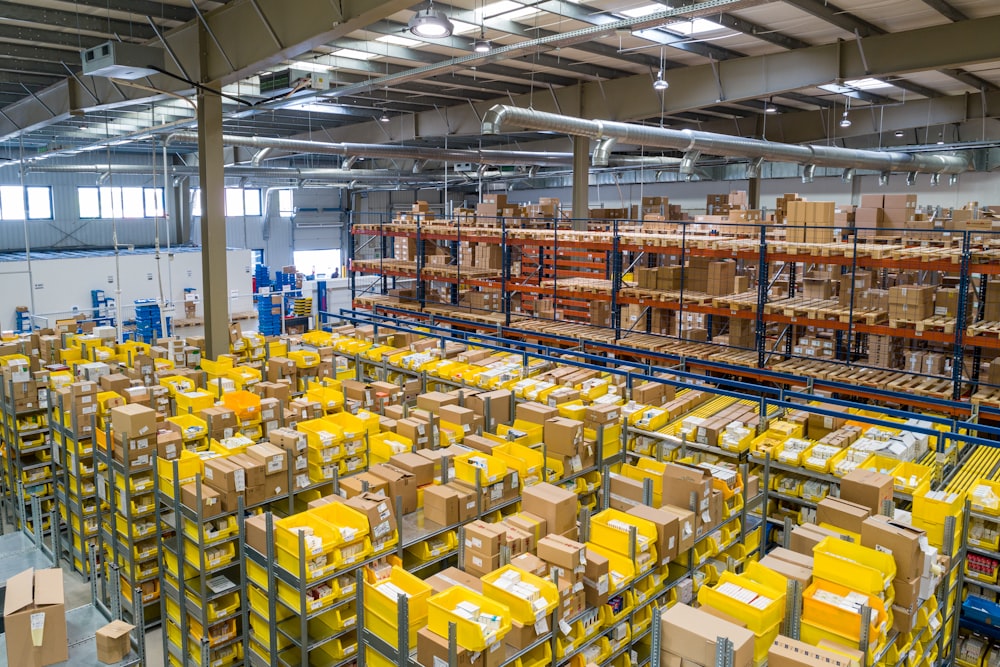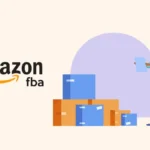
Image Source: Unsplash
Are you looking to jumpstart your entrepreneurial journey and achieve profitability through Amazon FBA in 2024? Look no further! In this comprehensive guide, we will walk you through the exact steps and strategies needed to make your Amazon FBA business a profitable venture.
As the e-commerce industry continues to flourish, Amazon FBA has emerged as a prime opportunity for entrepreneurs to leverage the power of the largest online marketplace in the world. By utilizing Fulfilled by Amazon (FBA), sellers can tap into Amazon’s vast customer base and benefit from their robust logistics and customer service infrastructure.
Whether you’re a seasoned seller looking to enhance your existing FBA business or a rookie trying to break into the world of e-commerce, this guide has got you covered. We will dive deep into topics such as product selection, sourcing, inventory management, listing optimization, and marketing strategies to ensure your success in 2024 and beyond.
Don’t miss out on this chance to learn how to start and grow a profitable Amazon FBA business in 2024. Get ready to take your e-commerce game to new heights!
Why Start an Amazon FBA Business in 2024?
Starting an Amazon FBA business in 2024 can be incredibly lucrative. With the global pandemic accelerating the shift towards online shopping, more and more consumers are turning to Amazon for their purchasing needs. This presents a massive opportunity for sellers to tap into a growing customer base and generate substantial profits.
One of the key advantages of starting an Amazon FBA business is the access to Amazon’s vast logistics network. By opting for FBA, you can outsource inventory management, picking, packing, and shipping to Amazon, allowing you to focus on other aspects of your business. Additionally, utilizing FBA means your products are eligible for Prime shipping, increasing your chances of winning the buy box and attracting more customers.
Steps to Get Started with Amazon FBA
Now that you understand the potential of starting an Amazon FBA business in 2024, let’s dive into the step-by-step process of getting started.
- Research and Product Validation: The first step is to conduct thorough market research to identify profitable product opportunities. Look for products with high demand, low competition, and a healthy profit margin. Validate your product ideas by analyzing sales data, customer reviews, and competitor analysis.
- Supplier Sourcing: Once you’ve identified a potential product, the next step is to find reliable suppliers. You can source products from manufacturers, wholesalers, or even consider private labeling. Verify the quality of the suppliers’ products, negotiate pricing and terms, and establish a strong relationship for long-term success.
- Create an Amazon Seller Account: To start selling on Amazon, you need to create a seller account. Choose between an Individual or Professional account, considering your business needs and projected sales volume. Provide the necessary information and complete the registration process.
- Listing Optimization: Optimizing your product listings is crucial for visibility and sales. Write compelling product titles, engaging bullet points, and keyword-rich descriptions. Use high-quality product images and utilize backend keywords for better search ranking. Monitor your listings regularly and make necessary optimizations to stay competitive.
- Inventory Management: Efficient inventory management is vital to avoid stockouts and maximize sales. Use Amazon’s inventory management tools to track inventory levels, set up automated reorder alerts, and manage your stock effectively. Optimize your inventory storage to minimize FBA fees and ensure timely order fulfillment.
Choosing Profitable Products for Your Amazon FBA Business
Finding profitable products is the foundation of a successful Amazon FBA business. Here are some key factors to consider when selecting products to sell:
- Demand and Competition: Look for products with consistent demand and manageable competition. Use tools like Jungle Scout, Helium 10, or AMZScout to analyze sales data, estimate demand, and evaluate competition levels.
- Profit Margin: Calculate the potential profit margin by considering the product’s cost, Amazon fees, and other expenses. Aim for products with a healthy profit margin to ensure a sustainable business.
- Product Differentiation: Differentiate your products from competitors to attract customers. Consider unique features, improved quality, bundling, or packaging innovations to stand out in the marketplace.
- Seasonality: Assess the seasonality of your chosen products. Some products may experience higher demand during specific periods, while others may be consistent throughout the year. Plan your inventory and marketing strategies accordingly.
Finding Suppliers and Sourcing Products
Finding reliable suppliers is crucial for maintaining product quality and ensuring a smooth supply chain. Here are some effective ways to source products for your Amazon FBA business:
- Online Supplier Directories: Utilize online directories like Alibaba, Global Sources, or ThomasNet to connect with manufacturers and wholesalers worldwide. Filter suppliers based on location, product category, and minimum order quantities.
- Trade Shows and Exhibitions: Attend trade shows and exhibitions related to your product niche to connect with suppliers face-to-face. This allows you to establish personal relationships, negotiate better deals, and inspect product samples.
- Local Sourcing: Explore local sourcing options to support domestic manufacturers and reduce lead times. Connect with local manufacturers, attend industry meetups, or join relevant associations to discover potential suppliers in your area.
- Private Labeling: Consider private labeling as a strategy to differentiate your products and build a unique brand. Private labeling involves purchasing generic products from suppliers and adding your branding and packaging. This allows you to offer exclusive products and potentially charge higher prices.
Creating Your Amazon Seller Account
To start selling on Amazon, you need to create a seller account. Here’s how:
- Individual Seller Account: An individual seller account is suitable for those just starting or planning to sell a small number of items. It has lower monthly fees but charges a per-item fee for each sale. Sign up for an individual seller account on Amazon’s Seller Central platform and provide the necessary information.
- Professional Seller Account: A professional seller account is ideal for those planning to sell a large volume of products. It has a higher monthly fee but waives the per-item fee, making it cost-effective for high-volume sellers. Choose the professional seller account option during the registration process and follow the instructions to complete the setup.
Optimizing Your Product Listings for Higher Visibility and Sales
Optimizing your product listings is essential to improve visibility, attract customers, and increase sales. Follow these tips to optimize your Amazon FBA product listings:
- Keyword Research: Conduct thorough keyword research using tools like MerchantWords, Helium 10, or Sonar to identify relevant keywords with high search volume. Incorporate these keywords naturally into your product title, bullet points, descriptions, and backend search terms.
- Compelling Product Title: Create a concise and compelling product title that includes relevant keywords and highlights the unique selling points of your product. Keep it within Amazon’s character limit and make it easily scannable for potential customers.
- Engaging Bullet Points: Use bullet points to highlight the key features, benefits, and unique selling points of your product. Make them easy to read and scan, ensuring customers can quickly understand the value your product offers.
- Detailed Product Descriptions: Craft detailed and persuasive product descriptions that provide all the necessary information while emphasizing the benefits and solutions your product offers. Use storytelling techniques, customer testimonials, and clear calls-to-action to encourage conversions.
- High-Quality Product Images: Use high-resolution images that showcase your product from different angles and perspectives. Ensure the images are well-lit, visually appealing, and accurately represent your product. Include lifestyle images, infographics, or comparison charts to enhance the customer’s understanding.
Fulfillment by Amazon (FBA) vs. Fulfillment by Merchant (FBM)
When selling on Amazon, you have the option to choose between FBA and FBM. Here’s a comparison to help you make an informed decision:
- Fulfillment by Amazon (FBA): With FBA, Amazon handles the storage, packaging, and shipping of your products. They also provide customer service, returns management, and Prime eligibility. FBA allows you to leverage Amazon’s infrastructure and reputation, ensuring fast and reliable order fulfillment.
- Fulfillment by Merchant (FBM): With FBM, you handle all aspects of order fulfillment, including storage, packaging, and shipping. This gives you more control over the process but requires you to manage inventory, customer service, and returns. FBM is suitable for sellers with unique fulfillment capabilities or those selling large and bulky items.
Marketing and Promoting Your Amazon FBA Business
To drive traffic, increase sales, and grow your Amazon FBA business, you need to implement effective marketing strategies. Here are some key marketing channels and tactics to consider:
- Amazon PPC Advertising: Utilize Amazon’s Pay-Per-Click (PPC) advertising platform to promote your products and increase visibility. Set up targeted campaigns, choose relevant keywords, and optimize your ad copy to maximize conversions.
- Amazon Coupons and Deals: Run promotions, offer discounts, and create coupon campaigns to attract customers and boost sales. Leverage Amazon’s built-in promotional tools to highlight your products and drive conversions.
- Social Media Marketing: Utilize social media platforms like Facebook, Instagram, or YouTube to create engaging content, build a community, and drive traffic to your Amazon listings. Leverage influencers, run targeted ads, and engage with your audience to increase brand awareness.
- Email Marketing: Build an email list of past customers or interested prospects and send regular newsletters, product updates, and exclusive offers. Personalize your emails, provide valuable content, and encourage repeat purchases to drive sales.
Scaling and Growing Your Amazon FBA Business in 2024
Once your Amazon FBA business starts generating consistent sales and profits, it’s time to scale and grow. Here are some strategies to take your business to the next level:
- Expand Product Catalog: Introduce new products or variations to cater to a wider customer base. Analyze market trends, customer feedback, and competitor offerings to identify potential product opportunities.
- International Expansion: Consider expanding your business to international Amazon marketplaces to tap into new customer segments. Research market demand, adapt your product listings for local languages, and optimize your logistics for cross-border shipping.
- Brand Building: Invest in building a strong brand identity to differentiate yourself from competitors. Develop a compelling brand story, create a memorable logo, and maintain consistent branding across all touchpoints.
- Amazon Advertising: Explore advanced advertising options like Sponsored Brands, Sponsored Display, or Amazon DSP to expand your reach and target specific customer segments. Monitor performance, optimize campaigns, and allocate your advertising budget effectively.
In conclusion, starting and growing a profitable Amazon FBA business requires careful planning, research, and execution. By following the strategies outlined in this guide, you’ll be well-equipped to navigate the ever-evolving e-commerce landscape and achieve success in 2024 and beyond. Embrace the opportunities presented by Amazon FBA and take the first step towards building a thriving online business. Good luck!










